Pandas In The Mist
First published in Sanctuary Cub,
Vol. 43
No. 3,
March 2023
By Mohit Ghatak
Against the backdrop of the Eastern Himalayan mountain range and clear skies is the vast Singalila National Park. Deep inside, in one of the most inaccessible terrains, lives a rare animal: the Himalayan red panda.
Mountain Furball
I will never forget my first sighting of this amazing creature. We had been hiking for over a kilometre over steep slopes and were accompanied by experienced trackers. The trees, spectacular with their hanging moss and dark interiors, make such good hiding places that I worried we wouldn’t see any red pandas. It was a misty day and the clouds were low, often covering the forest. In spite of the freezing temperatures and poor visibility, we kept hiking and finally reached a spot in the midst of thick bamboo foliage. And there, as my eyes adjusted to the light, a little orange furball materialised. The red panda was so well camouflaged, that I had almost missed it.
The Himalayan red panda Ailurus fulgens, also known as the lesser panda, is a small mammal native to the Eastern Himalaya. It has been listed as Endangered in the IUCN Red List since 2008. It is found in Nepal and Bhutan, and in India in the states of Sikkim, West Bengal and Arunachal Pradesh.
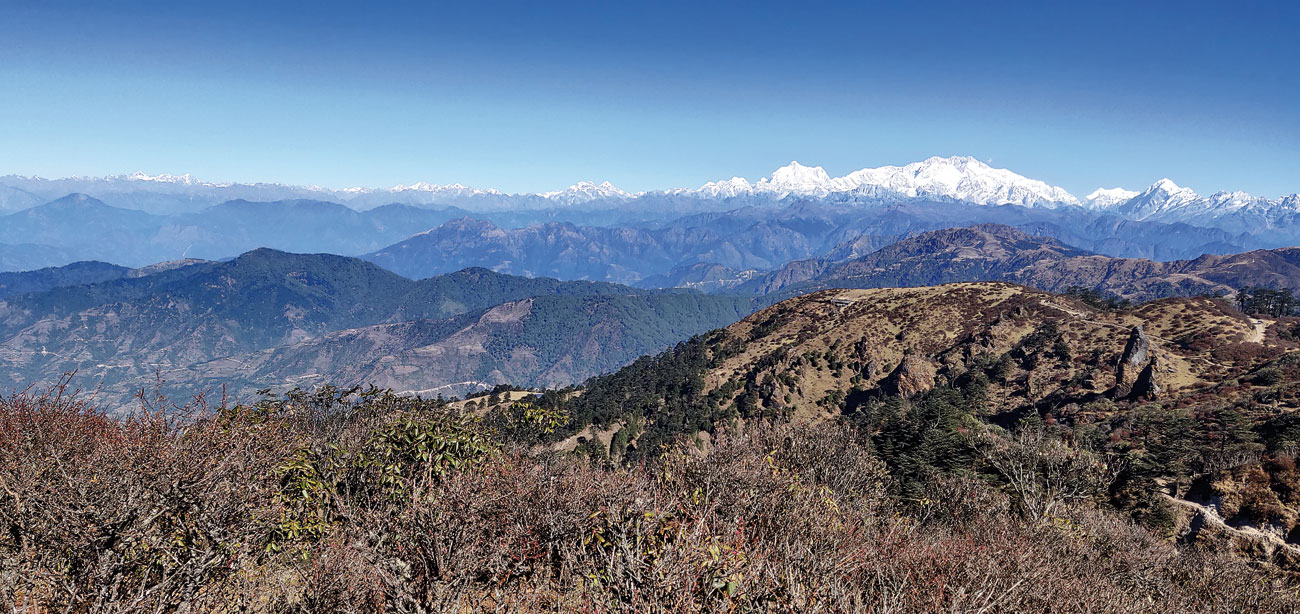
View of the Singalila National Park. Photo: Nayan Khanolkar.
Red pandas are inhabitants of high-altitude forests with bamboo understories. They live on steep mountainside slopes, which are covered with temperate broadleaf forests and subalpine conifers, which are dominated by fir, Himalayan hemlock, oak, maple, rhododendron, juniper, and bamboo thickets.
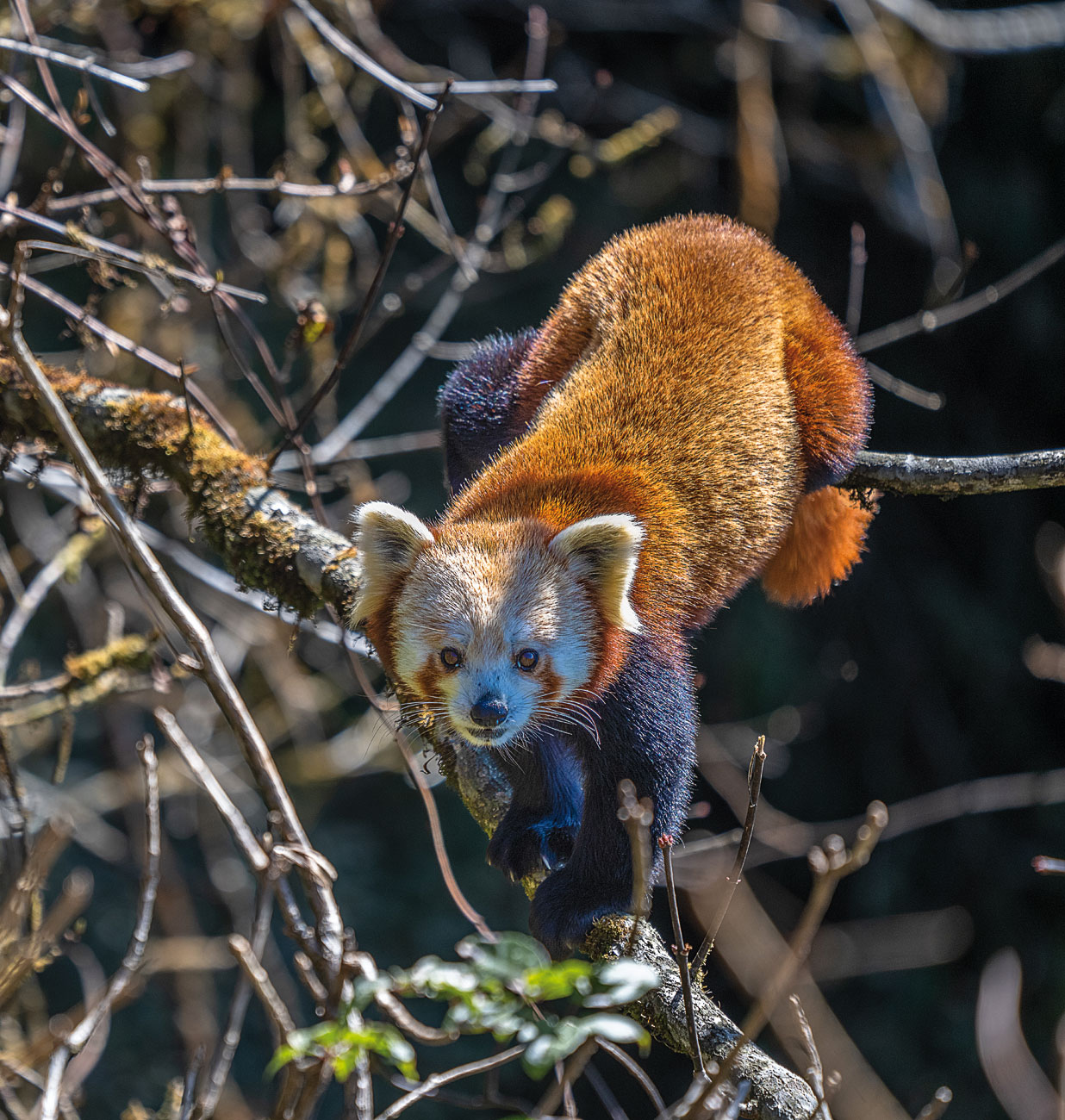
A juvenile red panda. Photo: Mohit Ghatak.
First Encounters
The mist cleared for a short while, and the lovely early afternoon light shone on the panda. For an instant, it looked directly at me. Its white ears stood out against its brilliant, dense, reddish-brown fur. I had goosebumps.
The red panda curled up on the tree branch and began to snooze. These animals have a languid behaviour, resulting from their slow metabolic rate – which is probably an evolutionary strategy to conserve energy. After a while, it got up and treading delicately across the branch, disappeared into the foliage, swishing its bushy tail for balance. The length of the tail reflects its use as an organ of balance during arboreal locomotion. Interestingly, the soles of the red panda’s paws are also covered with hair. This feature likely represents an adaptation for walking on snow, as in the Tibetan sand fox and polar bear. The paws are equipped with sharp, curved, semi-retractable claws that the red pandas utilise extensively while climbing. Their reddish-brown coats and bushy tails with alternating red-and-white rings help the red panda to camouflage among mossy branches.
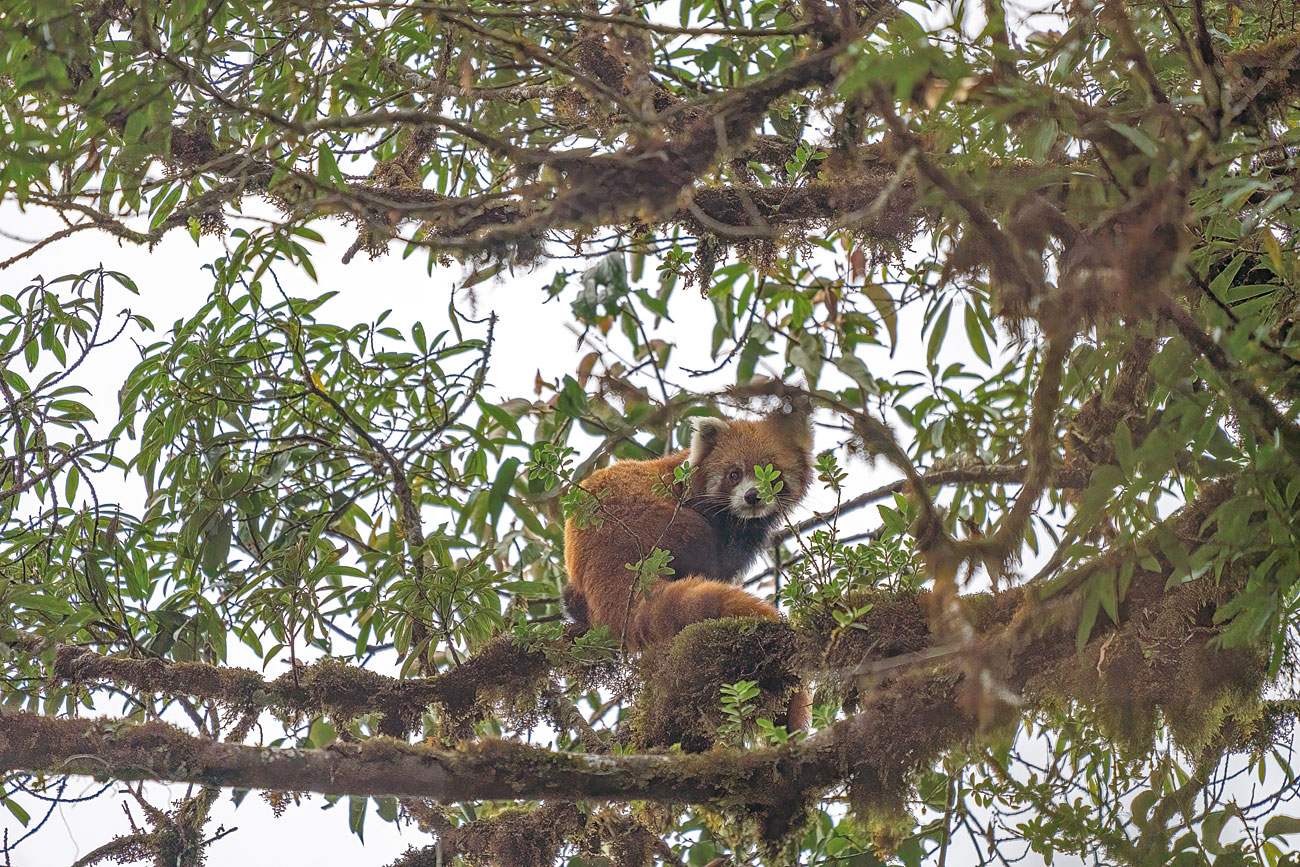
Red pandas are skilled climbers. Photo: Mohit Ghatak.
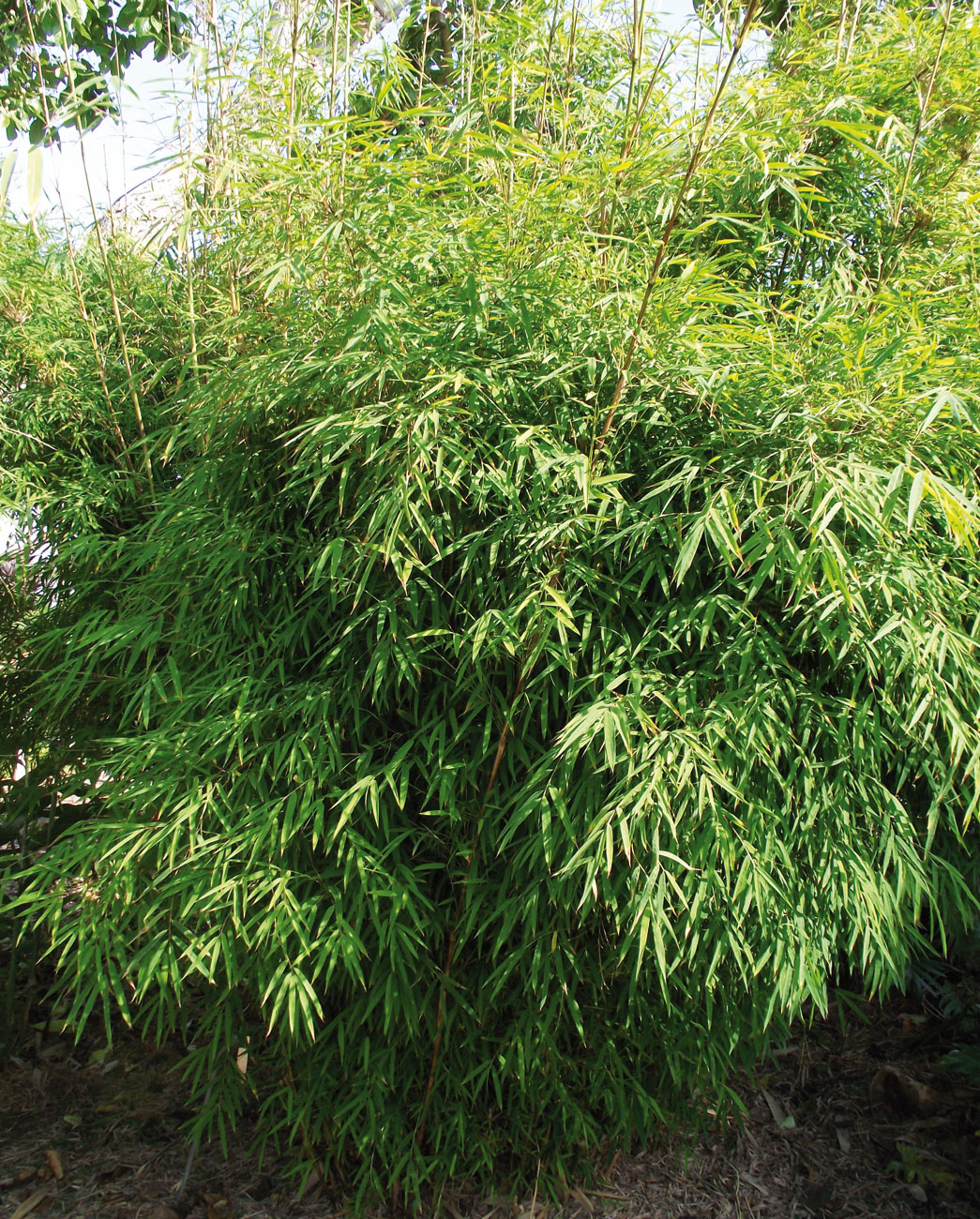
Two-thirds of their diet are bamboo leaves. Photo: Public Domain.
Its diet consists of about two-third bamboo leaves, but they also eat berries, fruit of tenga Sorbus cuspidata and tekhiphal Actinidia spp., fruit and leaves of lise Ilex spp., and leaves of kapasi Acer spp. They also occasionally feed on young birds, fish, eggs, small rodents and insects. Bamboo is a staple in the red panda’s diet. Like the giant panda, the red panda cannot digest the cellulose in bamboo, so it has to eat a huge amount of bamboo shoots (4.8 kg.) and leaves (1.5 kg.) each day to survive. In other words, a red panda eats its weight in bamboo every day! Due to its low caloric intake, nearly every waking hour of a panda’s life is spent eating.
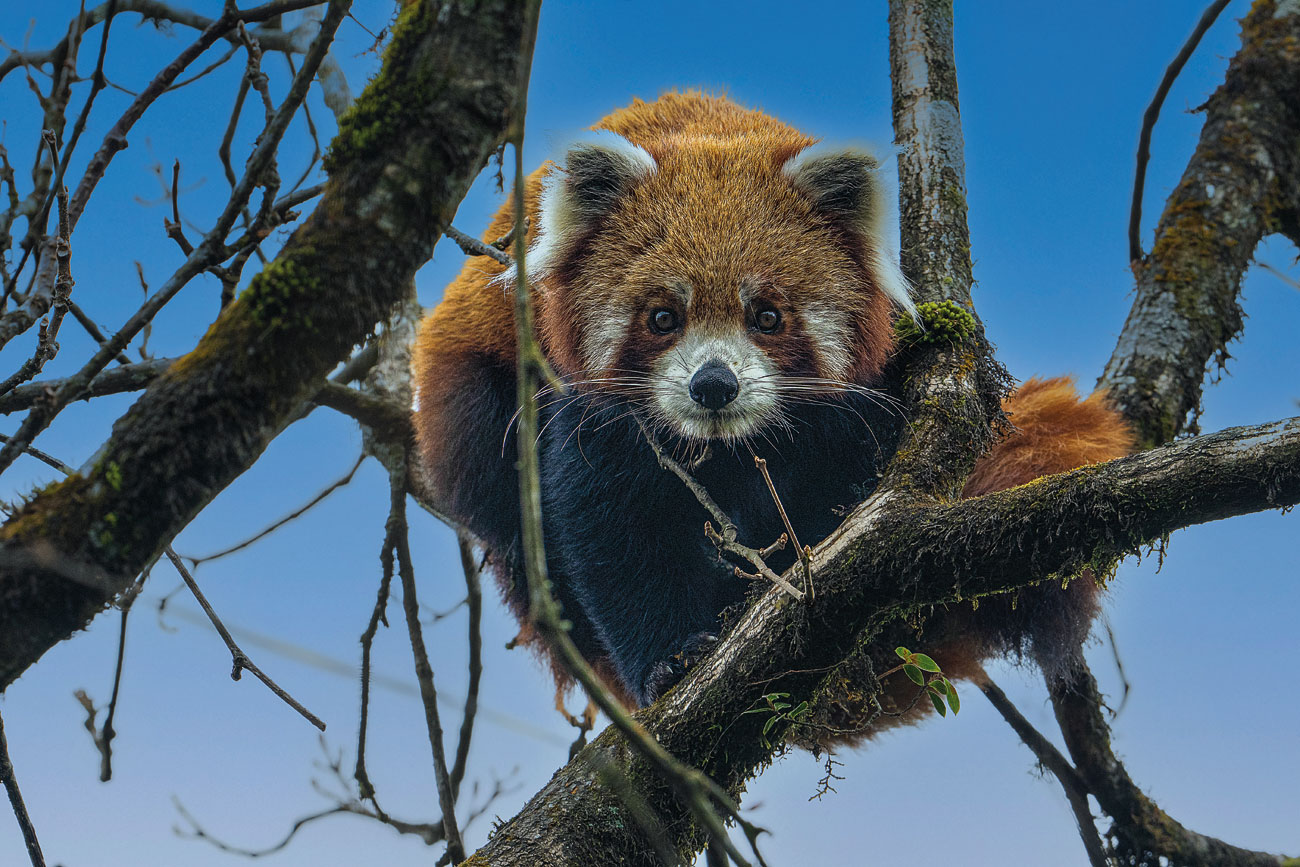
Red pandas are brown and maroon cat-sized mammals. Photo: Mohit Ghatak.
Crucial Responsibilities
I had two more sightings of this elusive creature during my stay in Singalila in the Eastern Himalaya in Darjeeling, West Bengal, in early December 2022; including an encounter with a juvenile red panda. We tracked it by following its droppings on a bright, sunlit morning, against the breathtaking backdrop of the mountains and the lush green forest stretching over
the valley.
Tips On Visiting
~ In India, you can see the red panda in Neora Valley, Khangchendzonga and Singalila National Parks.
~ The best time to visit is between mid-March to mid-May and from October to November.
~ Your chances of spotting a red panda are likely to be higher if you are with a guide.
My rare encounter with the red panda reminded me that we humans have a responsibility to share the planet with other animals. With just about 10,000 individuals worldwide, conservation of the red panda through research, education and communication is critical.
Mohit Ghatak is an engineer based in Singapore. He enjoys travelling and photographing wildlife and believes that sharing his images with others will build interest in wildlife and encourage people to work to preserve wild habitats.






